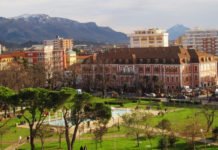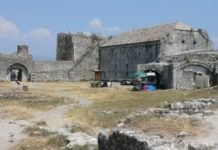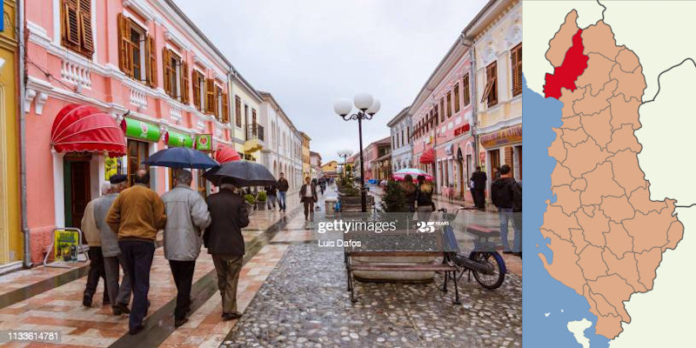
History
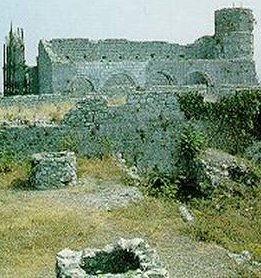 The history of Shkodra has been an ongoing struggle for independence and selfdetermination. Shkodra is the most ancient and largest city in Northern Albania. It was founded in 4 BC. In 2 BC. it became a capital of the Illyrian Empire under the name Scutari.
The history of Shkodra has been an ongoing struggle for independence and selfdetermination. Shkodra is the most ancient and largest city in Northern Albania. It was founded in 4 BC. In 2 BC. it became a capital of the Illyrian Empire under the name Scutari.
Scutari became an active urban center with traders, and shopkeepers. In 168 BC, the Illyrian Empire fell to the Romans. Shkodra became a Roman colony until the intoduction of the Byzantium Empire. Shkodra remain a strategic city and often the center of struggle among various empires. In 1396 AD Shkodra came under the protection of Venice, forming a coalition against the Ottoman Empire. The Ottoman Empire was succesful in seizing Shkodra twice in 1474 and 1478, but was not able to hold it. Finally in 1479, Shkodra fell to Ottomans. In the same year, the first large scale immigration of Albanians left for Calabria, Venice, Trieste and other modern day Italian cities. For the next 500 years, Shkodra would remain under Ottoman Empire and became the capital of the sector knouwn as “Bushatllinjve”.
In the 19th century, Shkodra had 50,000 inhabitants, with over 3,500 shops and a local government. Throughout, Shkodra continued to develop economically and culturally. It used to be the link for the Mediterranean merchants.
In the ate 19th century, Shkodra became one of the Albania’s center for the National Renaissance movement against Ottomans. During this time the League of Prizren was formed. The League of Prizren with Shkodra’s representative, Daut Boriçi, fought for independence and the protection of the Albanian cities. The League assisted Shkodra in protecting the North. The National Renaissance was further raised with writtings of such notable Shkodra citizens as: Jubani, Vasa, Shiroka, Gurakuqi, Fishta, Mjeda and Sokoli. Between 1912-1920, Shkodra became the rallying center for indipendence from the Ottomans. During World War II, Shkodra fought against the fascists. In 1990, Shkodra once again became one of the first cities to begin the movement for democracy and against the Communism.
Geography
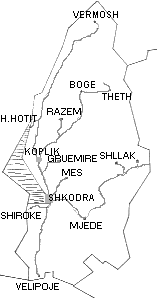 The district of Shkodra is one of the largest districts in Albania. It stretches from the Northern Alps to the costal lowlands. It spans from 42 50′ (Boks, Velipojë) longitude and from 19 54′ (Dukagjin) to 19 17′ (the lake of Shkodra) latitude.
The district of Shkodra is one of the largest districts in Albania. It stretches from the Northern Alps to the costal lowlands. It spans from 42 50′ (Boks, Velipojë) longitude and from 19 54′ (Dukagjin) to 19 17′ (the lake of Shkodra) latitude.
Boundary line length is 304 km, which 149 km are with Montenegro. Nearly 80% of the district is mountains. The highest peak is Jezerca (2,694 m).
The climate is Mediterranean; the average yearly temperatures varies from 7.5C in Vermosh to 14.8C in the city of Shkodra. The temperature in January ranges from -2.7C to 5C; in July, 17-18C to 24.6C. The average yearly rainfall is about 2000 mm, one of highest in Albania.
The district of Shkodra is distinguished for its rich hydrographical sources. There are rivers such as Drini, Buna, Shala, Kiri, Gemi, streams and water sources.
West of the city is Shkodra lake, the largest in the Balkans, 368 km quarter of which 169 km quarter belongs to the Albanian territory.
The climatic factors have influenced the growth of rich vegetations with more then 1,700 species. Nearly 30% of the surface is occupied by forests, mostly pine trees and beach forests. There is also a variation of wild animals.
Demographic data
The district of Shkodra has a population of 253,225 inhabitants, the forth highest in Albania. During the last 50 years, the population has grown very rapidly. Since 1938, the population has increased more than 3 times.
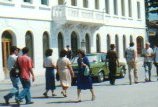
The rise of population is due to natural growth. The number of births is 23 per 1,000 and deaths 5 per 1,000. The density of population is 101.5 inhabitants per km2.

Nearly 32.2 % of population lives in the city of Shkodra. Shkodra is the largest political and administrative center of the district, and has a population of 83,436 inhabitants. The people of Shkodra are distinguished for their vitality: nearly 31.9 % are children; 57.8 % are employed and only 11.3 % are retired. The proportion of male-female: 104-100.
The average age of population is 28.1 years old. (It’s used the 1991 year statistic.)
Tourism
The ancient city of Shkodra is located in the Northwestborder on Adriatic coast, surrounded by Drini, Kiri and Buna rivers, and Shkodra lake. The magnificent Albanian Alps provide a scenic backdrop that hide small picturesque villages.
Velipoja beach, 32 km south and 14 km in length, is a natyral and pristine sandy beach. Its warm water and sea air are continuous to be used for medical purposes.
West of Shkodra lake, at the foot of Tarabosh mountain, is the picturesque village of Shiroka, known not only for it beach but its fresh air and sweet smell of flora. Zogaj village, adjacent and borderng Montenegro, has a beautiful beach and a rich tradition for carpentry. North of Shkodra, 41 km, is the village of Razma, where mountain climbing and skiing are ideal. In the heart of Albanian Alps is Theth village, 76 km from Shkodra, with magnificent waterfalls and towering mounain peaks well over two 2000 m. The remaining villages in the area, Vermosh, Boga and Vukli are each nique.
In the center of Shkodra is ‘Rozafa Hotel’, an 8 storey structures with 91 rooms and 161 beds. It offers a panoramic view of the city and entertainment. Additional accommodations can be found at private local hotels. Gift shops can be ound at every corner.
| NOTE: | The information is taken from the folder of “Shkodra District Council” 1993. For more information, please contact: Tel. 00355-224-3506, Fax: 00355-224-3720 / 2737. |

